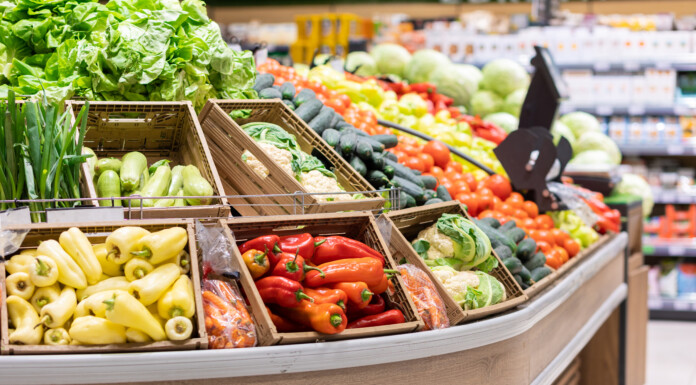Consumers should not be expecting any relief at the checkout counter anytime soon.
Stats NZ released data on Monday indicating food prices were 12 per cent higher in February than they were at the same time last year “due to rises across all the broad food categories”.
Compared to February 2022, grocery food prices increased by 12 per cent.
Fruit and vegetable prices were up a whopping 23 per cent.
At the same time, the Infometrics-Foodstuffs Grocery Supplier Cost Index, which tracks changes in supplier costs for supermarkets, measured a 10.4 per cent increase in comparison to one year ago.
According to Clive Webber, owner/operator of Masterton’s New World, the ongoing price increases ultimately represent the longtail of the disruptions caused to the global supply chain by covid-19.
“The pandemic closed down factories and affected the distribution pipeline around the world. Here at the bottom of the world, we’re playing catch up.”
Cyclones Hale and – especially – Gabrielle have exacerbated this problem, given the concentration of some product suppliers in flood-ravaged parts of New Zealand.
Shortages that continued to affect the availability of products on shelves include raw materials – such as packaging components or food ingredients – and the products themselves, Webber said.
“Take eggs for example – obviously there was a supply issue prior to Christmas but more recently we’ve had an egg supplier who’s had all the eggs ready to go but they’ve had nothing to ship them in because their warehouse was flooded and all their packaging was damaged.”
New World’s parent company Foodstuffs is of the view that New Zealand is currently at the peak of the inflation cycle – “We could be here for some time as the impacts of severe weather events add pressure”, Foodstuffs NZ Managing Director Chris Quin said.
“As a retailer, we obviously hope things settle down soon,” Webber said, noting that for the time being Foodstuff co-operatives are holding their food prices below both inflation and supplier cost increases.
For independent fresh fruit and vegetable supplier Jina’s, the recent cyclones loom large when it comes to that 23 per cent increase in produce prices, although it’s not the only factor in play.
“Usually, we’re juggling three to four balls but at the moment we’re trying to keep seven to eight balls in the air,” said Jina’s sales manager Phil Simms.
The company has a long-term policy of spreading its risk when it comes to weather events affecting supply by ensuring they have at least three suppliers for each product in different locations around the country, including the South Island.
But this kind of hedging isn’t currently helping when it comes to ensuring the certainty of stone fruit supply, for example. Not only was a significant amount of the stone fruit grown in Hawke’s Bay lost to flooding, but the produce that wasn’t damaged in the deluge was unable to leave the region due to road damage. Meanwhile, stone fruit growers in Otago have not only been impacted by drought, but distribution from the South Island has also been disrupted by issues with the Interislander during the past month.
Although the price of some produce should return to more ‘normal’ levels relatively soon, shoppers should anticipate products such as kumara riding high for much longer.
“Most kumara is grown in Northland where floods have decimated the crops,“ Simms noted.
“Given the severely limited supply, kumara prices have moved from $4 a kilo to $12 a kilo – and should expect that to continue for another year or so” – in part because a lot of the seed stock is gone too.
“You’ve got to feel sorry for growers. If you’ve lost half of your crop, you’re 50 per cent down on your income, so of course you need to increase the price, which gets passed on to us and then carried through to the consumer.”
Continuing labour shortages – for both growers and transport companies – as well as the rising cost of business inputs like fuel are also contributing to driving up costs, Simms said.
“It’s all a bit of a perfect storm – no pun intended.”


